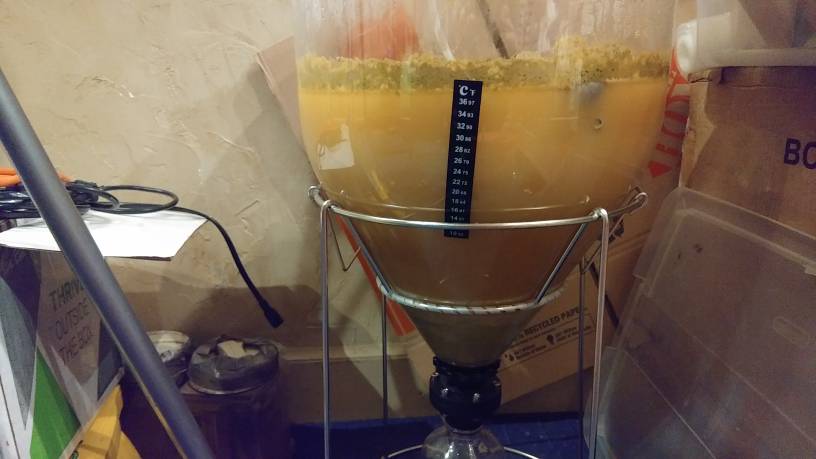some will lash out at me in anger, but if you want to rack warm, you can do this. water purge the keg and then get your racking cane ready. right as you are ready to rack, take the poppet out of the out post on the keg and screw the main fitting back on. take the spring and "poppet" out of the ball lock QD and connect it to your racking tubing. let a little beer waste out of the line and then quickly pop it onto the post. when the keg is full, put the poppet back into the keg beer out fitting. there is a little more oxygen exposure doing this probably, but it doesn't seem to cause problems from what i've seen. i tried different filters and such and none of it consistently worked for me.
if you go the cold crash route (which works very well every time) make sure that you aren't sucking air into your fermenter slowly or you can get diacetyl in the beer. I traced my diacetyl problem in hoppy beers back to cold crashing without an absolutely tightly sealed carboy. when i stopped cold crashing, my diacetyl problem went away.
I have a fermonster with spigot so I use a tube with a liquid QD on one end and the other goes over the spigot's barb. During racking I also attach a jumper cable from the gas post on the keg to a gas post I added to my fermonster lid so I have a true closed system.
For really hoppy beers like this I have been doing the following to avoid clogging:
1) Fermentation purge the keg so there is essentially no O2 inside (jumper airlock to keg's liquid post and open PRV slightly or use gas QD with nothing on it). When you're close to racking, seal lid with 10psi from CO2 tank
2) On the racking tubing, remove the liquid QD poppet
3) Right before racking, set co2 line at 1-2 psi and then in quick succession carefully loosen the liquid gas post so that any pressure is released while still somewhat screwed on and immediately clamp down gas QD to create positive pressure out of the liquid post that is now open.
4) Once the majority of pressure is released, unscrew the post completely, remove the liquid poppet, and replace the post (all while co2 is still coming out the liquid post)
5) Attach the racking tubing to the liquid post to purge the tubing
6) Once tubing is purged, attach open end onto spigot and remove gas QD from gas post
7) Attach gas jumper cable from gas QD to fermenter airlock so that any pressure equalizes.
8) Open spigot and walk away knowing this transfer will not clog!
This creates a fully purged system with no poppets to get in the way. It sounds complicated but once you do it a few times it's pretty easy.
Then once I'm done filling the keg, I vent any pressure out of the keg (important or else beer will come out once you disconnect the liquid QD), remove the racking hose from the keg, unscrew the post, add the poppet back in, and screw it back on. I then purge a couple times for good measure.
For those paying attention, yes there will still be some O2 in the top of the diptube (or tubing in my case) from the short time you have it exposed with no positive pressure. That is easily negated by pushing out a bit of beer (and that o2) at the end of all this...that's where I get my hydrometer reading
The goal is making sure anytime the keg is open there is positive pressure to keep the O2 at bay. It's certainly not 100% but it's close and saves me from the headache of a stalled transfer.
EDIT - I just did the process and realized I had a couple things wrong so I updated it above























































![Craft A Brew - Safale S-04 Dry Yeast - Fermentis - English Ale Dry Yeast - For English and American Ales and Hard Apple Ciders - Ingredients for Home Brewing - Beer Making Supplies - [1 Pack]](https://m.media-amazon.com/images/I/41fVGNh6JfL._SL500_.jpg)



